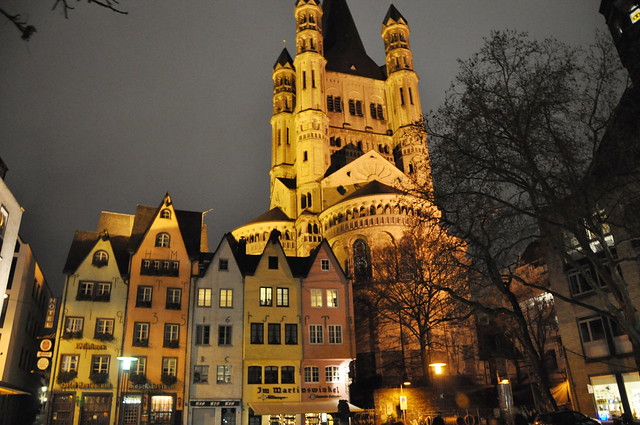
Estávamos práticamente a sair de Colónia, caminhávamos até ao nosso parque de estacionamento quando a ponte Hohenzollern iluminada sobre o rio Reno nos chamou a atenção. Fomos até á margem do rio, zona a que chamam de Frankenwerft e aqui descobrimos uma das partes antigas da cidade (ainda que reconstruída depois da Segunda Guerra Mundial).
We were leaving Cologne, walking towards the parking when the illuminated Honezollern brigde over the Rhine River caught our attention. We went to the bank of the river, the area they call Frankenwerft and here we find one of the old parts of the city (albeit rebuilt after the Second World War).
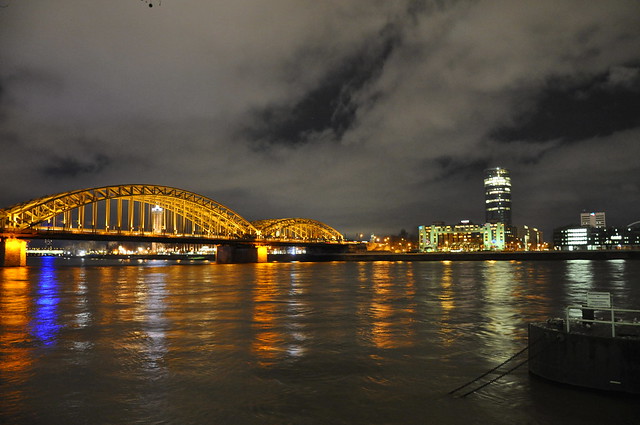
Um dos primeiros edificios relevantes que vimos é o Stapelhaus, foi construído no século XVI para armazenar peixe e também ele teve que ser reconstruído depois da guerra.
Ali perto está o Fischmarkt, o mercado de peixe que hoje dá lugar a bares a e restaurantes instalados nos seus coloridos e pitorescos edificios.
Por trás podemos ver o Gross St. Martin, a construção original data do século XII e reconstruída depois da guerra cuja obra termina apenas a 1985. É uma das doze igrejas de estilo românico na cidade e até á construção da Catedral, um dos edificios religiosos mais importantes. A sua única torre de tamanho considerável marcam claramente a paisagem no Fischmarkt.
Ainda no mesmo passeio a Haus des Kölner Handwerks, a casa de artesanato da região.
Foi uma pena só termos tido meio dia na cidade, teria sido interessante explorar melhor esta zona, fica para uma próxima oportunidade.
One of the first relevant buildings we saw was the Stapelhaus, it was built in the sixteenth century to store fish and also had to be rebuilt after the war.
Nearby is the Fischmarkt, the fish market today that gives rise to restaurants and bars installed in their colorful and picturesque buildings.
Behind it we can see the Gross St. Martin, the original construction dates from the twelfth century and it was rebuilt after the war and ended only to 1985. It is one of the twelve Romanesque churches of the city and until the construction of the Cathedral, one of the most important religious buildings. Its single tower with considerable size enhances the landscape of the Fischmarkt.
In the same strall we see the Haus des Kölner Handwerks, the house of the region's crafts.
It was a shame we had only half a day in the city, it would have been interesting to explore this area, is for a next opportunity.
Nearby is the Fischmarkt, the fish market today that gives rise to restaurants and bars installed in their colorful and picturesque buildings.
Behind it we can see the Gross St. Martin, the original construction dates from the twelfth century and it was rebuilt after the war and ended only to 1985. It is one of the twelve Romanesque churches of the city and until the construction of the Cathedral, one of the most important religious buildings. Its single tower with considerable size enhances the landscape of the Fischmarkt.
In the same strall we see the Haus des Kölner Handwerks, the house of the region's crafts.
It was a shame we had only half a day in the city, it would have been interesting to explore this area, is for a next opportunity.
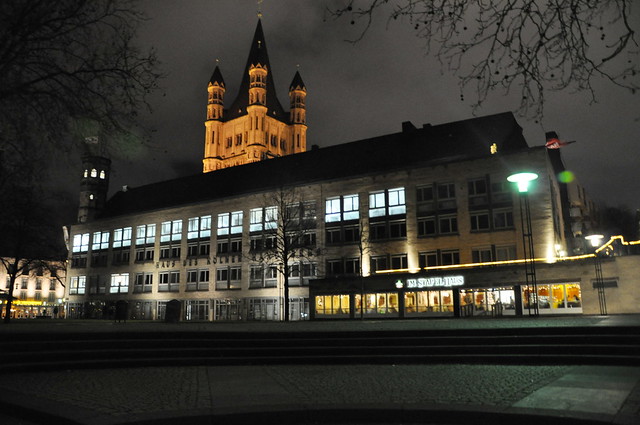
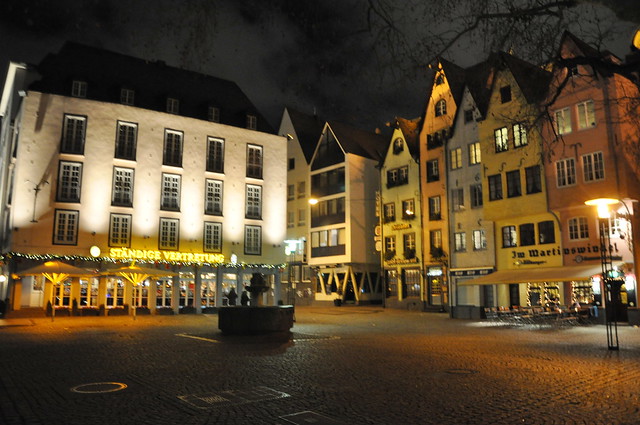
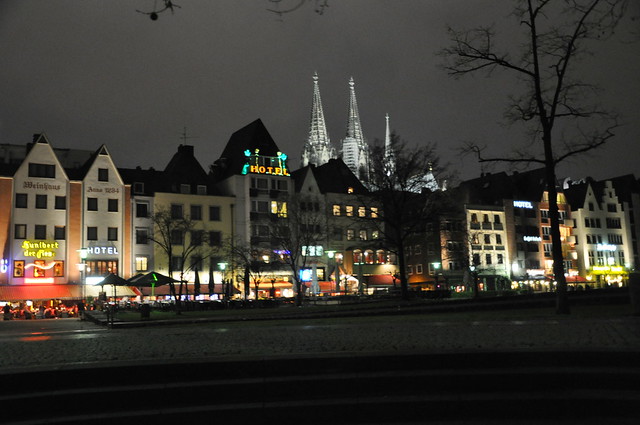
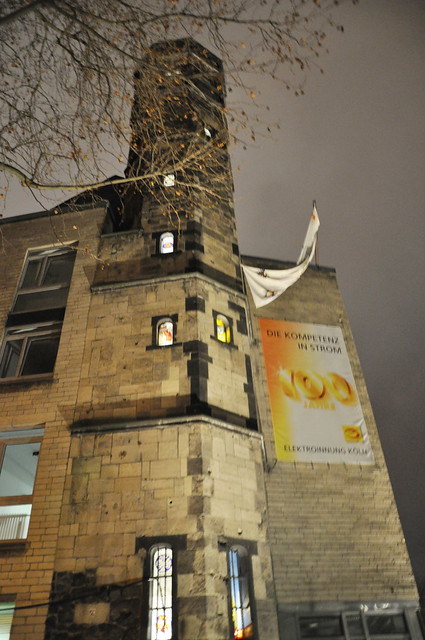
Mais/More
Posts:

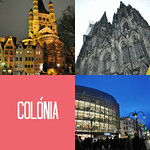
Sem comentários:
Enviar um comentário